Tegan Maharaj
The Singapore Consensus on Global AI Safety Research Priorities
Jun 25, 2025Abstract:Rapidly improving AI capabilities and autonomy hold significant promise of transformation, but are also driving vigorous debate on how to ensure that AI is safe, i.e., trustworthy, reliable, and secure. Building a trusted ecosystem is therefore essential -- it helps people embrace AI with confidence and gives maximal space for innovation while avoiding backlash. The "2025 Singapore Conference on AI (SCAI): International Scientific Exchange on AI Safety" aimed to support research in this space by bringing together AI scientists across geographies to identify and synthesise research priorities in AI safety. This resulting report builds on the International AI Safety Report chaired by Yoshua Bengio and backed by 33 governments. By adopting a defence-in-depth model, this report organises AI safety research domains into three types: challenges with creating trustworthy AI systems (Development), challenges with evaluating their risks (Assessment), and challenges with monitoring and intervening after deployment (Control).
Foundational Challenges in Assuring Alignment and Safety of Large Language Models
Apr 15, 2024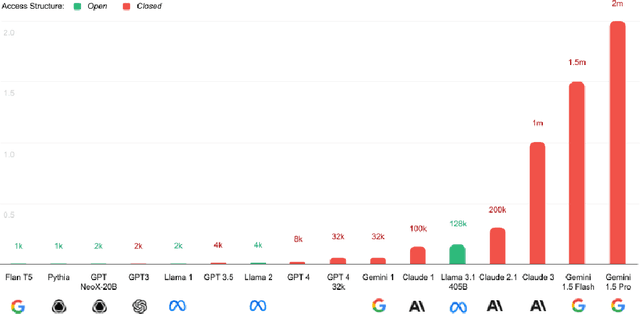


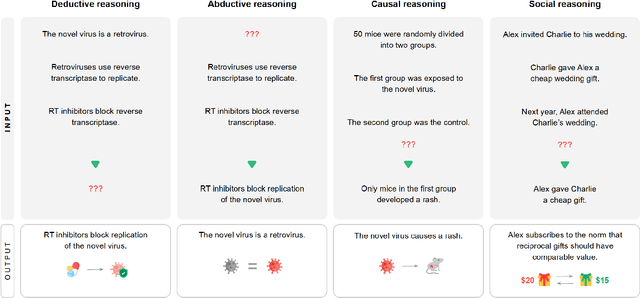
Abstract:This work identifies 18 foundational challenges in assuring the alignment and safety of large language models (LLMs). These challenges are organized into three different categories: scientific understanding of LLMs, development and deployment methods, and sociotechnical challenges. Based on the identified challenges, we pose $200+$ concrete research questions.
Beyond Predictive Algorithms in Child Welfare
Feb 26, 2024


Abstract:Caseworkers in the child welfare (CW) sector use predictive decision-making algorithms built on risk assessment (RA) data to guide and support CW decisions. Researchers have highlighted that RAs can contain biased signals which flatten CW case complexities and that the algorithms may benefit from incorporating contextually rich case narratives, i.e. - casenotes written by caseworkers. To investigate this hypothesized improvement, we quantitatively deconstructed two commonly used RAs from a United States CW agency. We trained classifier models to compare the predictive validity of RAs with and without casenote narratives and applied computational text analysis on casenotes to highlight topics uncovered in the casenotes. Our study finds that common risk metrics used to assess families and build CWS predictive risk models (PRMs) are unable to predict discharge outcomes for children who are not reunified with their birth parent(s). We also find that although casenotes cannot predict discharge outcomes, they contain contextual case signals. Given the lack of predictive validity of RA scores and casenotes, we propose moving beyond quantitative risk assessments for public sector algorithms and towards using contextual sources of information such as narratives to study public sociotechnical systems.
Managing AI Risks in an Era of Rapid Progress
Oct 26, 2023Abstract:In this short consensus paper, we outline risks from upcoming, advanced AI systems. We examine large-scale social harms and malicious uses, as well as an irreversible loss of human control over autonomous AI systems. In light of rapid and continuing AI progress, we propose priorities for AI R&D and governance.
Generalizing in the Real World with Representation Learning
Oct 18, 2022



Abstract:Machine learning (ML) formalizes the problem of getting computers to learn from experience as optimization of performance according to some metric(s) on a set of data examples. This is in contrast to requiring behaviour specified in advance (e.g. by hard-coded rules). Formalization of this problem has enabled great progress in many applications with large real-world impact, including translation, speech recognition, self-driving cars, and drug discovery. But practical instantiations of this formalism make many assumptions - for example, that data are i.i.d.: independent and identically distributed - whose soundness is seldom investigated. And in making great progress in such a short time, the field has developed many norms and ad-hoc standards, focused on a relatively small range of problem settings. As applications of ML, particularly in artificial intelligence (AI) systems, become more pervasive in the real world, we need to critically examine these assumptions, norms, and problem settings, as well as the methods that have become de-facto standards. There is much we still do not understand about how and why deep networks trained with stochastic gradient descent are able to generalize as well as they do, why they fail when they do, and how they will perform on out-of-distribution data. In this thesis I cover some of my work towards better understanding deep net generalization, identify several ways assumptions and problem settings fail to generalize to the real world, and propose ways to address those failures in practice.
Metadata Archaeology: Unearthing Data Subsets by Leveraging Training Dynamics
Sep 20, 2022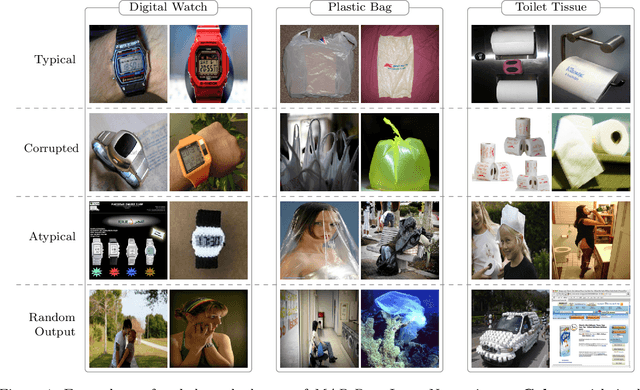

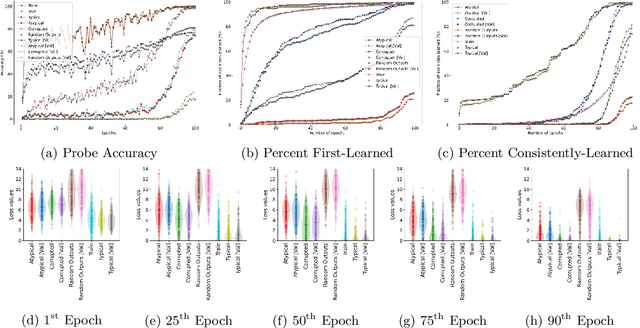
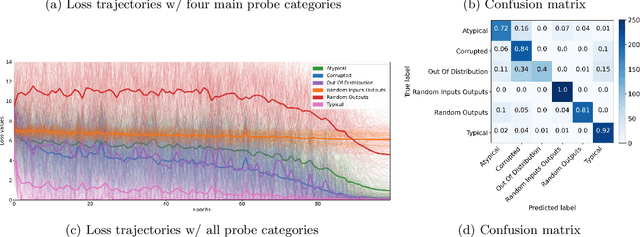
Abstract:Modern machine learning research relies on relatively few carefully curated datasets. Even in these datasets, and typically in `untidy' or raw data, practitioners are faced with significant issues of data quality and diversity which can be prohibitively labor intensive to address. Existing methods for dealing with these challenges tend to make strong assumptions about the particular issues at play, and often require a priori knowledge or metadata such as domain labels. Our work is orthogonal to these methods: we instead focus on providing a unified and efficient framework for Metadata Archaeology -- uncovering and inferring metadata of examples in a dataset. We curate different subsets of data that might exist in a dataset (e.g. mislabeled, atypical, or out-of-distribution examples) using simple transformations, and leverage differences in learning dynamics between these probe suites to infer metadata of interest. Our method is on par with far more sophisticated mitigation methods across different tasks: identifying and correcting mislabeled examples, classifying minority-group samples, prioritizing points relevant for training and enabling scalable human auditing of relevant examples.
Filling gaps in trustworthy development of AI
Dec 14, 2021Abstract:The range of application of artificial intelligence (AI) is vast, as is the potential for harm. Growing awareness of potential risks from AI systems has spurred action to address those risks, while eroding confidence in AI systems and the organizations that develop them. A 2019 study found over 80 organizations that published and adopted "AI ethics principles'', and more have joined since. But the principles often leave a gap between the "what" and the "how" of trustworthy AI development. Such gaps have enabled questionable or ethically dubious behavior, which casts doubts on the trustworthiness of specific organizations, and the field more broadly. There is thus an urgent need for concrete methods that both enable AI developers to prevent harm and allow them to demonstrate their trustworthiness through verifiable behavior. Below, we explore mechanisms (drawn from arXiv:2004.07213) for creating an ecosystem where AI developers can earn trust - if they are trustworthy. Better assessment of developer trustworthiness could inform user choice, employee actions, investment decisions, legal recourse, and emerging governance regimes.
COVI-AgentSim: an Agent-based Model for Evaluating Methods of Digital Contact Tracing
Oct 30, 2020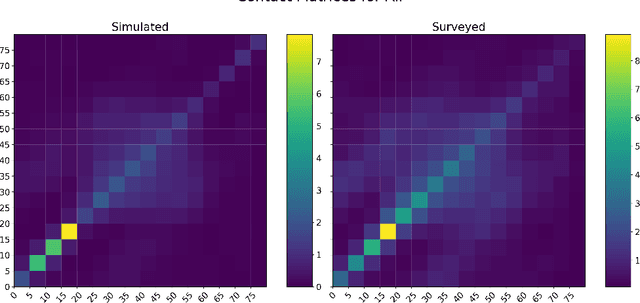
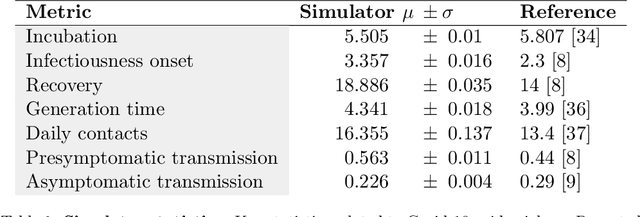
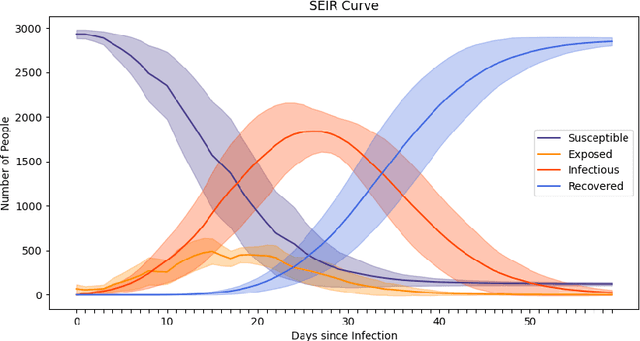
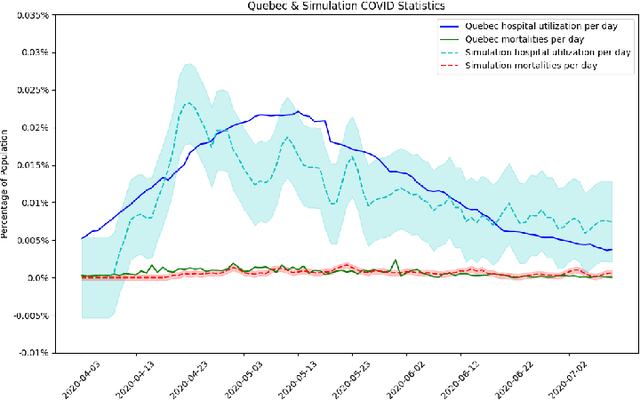
Abstract:The rapid global spread of COVID-19 has led to an unprecedented demand for effective methods to mitigate the spread of the disease, and various digital contact tracing (DCT) methods have emerged as a component of the solution. In order to make informed public health choices, there is a need for tools which allow evaluation and comparison of DCT methods. We introduce an agent-based compartmental simulator we call COVI-AgentSim, integrating detailed consideration of virology, disease progression, social contact networks, and mobility patterns, based on parameters derived from empirical research. We verify by comparing to real data that COVI-AgentSim is able to reproduce realistic COVID-19 spread dynamics, and perform a sensitivity analysis to verify that the relative performance of contact tracing methods are consistent across a range of settings. We use COVI-AgentSim to perform cost-benefit analyses comparing no DCT to: 1) standard binary contact tracing (BCT) that assigns binary recommendations based on binary test results; and 2) a rule-based method for feature-based contact tracing (FCT) that assigns a graded level of recommendation based on diverse individual features. We find all DCT methods consistently reduce the spread of the disease, and that the advantage of FCT over BCT is maintained over a wide range of adoption rates. Feature-based methods of contact tracing avert more disability-adjusted life years (DALYs) per socioeconomic cost (measured by productive hours lost). Our results suggest any DCT method can help save lives, support re-opening of economies, and prevent second-wave outbreaks, and that FCT methods are a promising direction for enriching BCT using self-reported symptoms, yielding earlier warning signals and a significantly reduced spread of the virus per socioeconomic cost.
Predicting Infectiousness for Proactive Contact Tracing
Oct 23, 2020
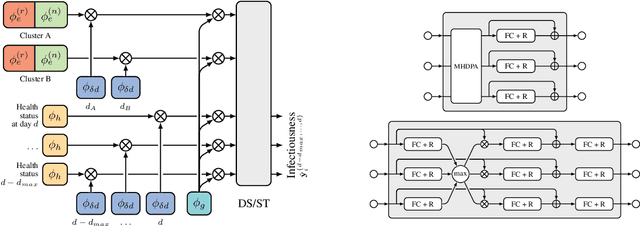

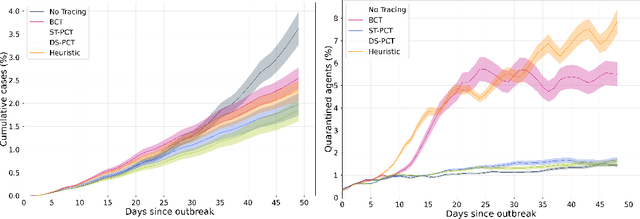
Abstract:The COVID-19 pandemic has spread rapidly worldwide, overwhelming manual contact tracing in many countries and resulting in widespread lockdowns for emergency containment. Large-scale digital contact tracing (DCT) has emerged as a potential solution to resume economic and social activity while minimizing spread of the virus. Various DCT methods have been proposed, each making trade-offs between privacy, mobility restrictions, and public health. The most common approach, binary contact tracing (BCT), models infection as a binary event, informed only by an individual's test results, with corresponding binary recommendations that either all or none of the individual's contacts quarantine. BCT ignores the inherent uncertainty in contacts and the infection process, which could be used to tailor messaging to high-risk individuals, and prompt proactive testing or earlier warnings. It also does not make use of observations such as symptoms or pre-existing medical conditions, which could be used to make more accurate infectiousness predictions. In this paper, we use a recently-proposed COVID-19 epidemiological simulator to develop and test methods that can be deployed to a smartphone to locally and proactively predict an individual's infectiousness (risk of infecting others) based on their contact history and other information, while respecting strong privacy constraints. Predictions are used to provide personalized recommendations to the individual via an app, as well as to send anonymized messages to the individual's contacts, who use this information to better predict their own infectiousness, an approach we call proactive contact tracing (PCT). We find a deep-learning based PCT method which improves over BCT for equivalent average mobility, suggesting PCT could help in safe re-opening and second-wave prevention.
Hidden Incentives for Auto-Induced Distributional Shift
Sep 19, 2020



Abstract:Decisions made by machine learning systems have increasing influence on the world, yet it is common for machine learning algorithms to assume that no such influence exists. An example is the use of the i.i.d. assumption in content recommendation. In fact, the (choice of) content displayed can change users' perceptions and preferences, or even drive them away, causing a shift in the distribution of users. We introduce the term auto-induced distributional shift (ADS) to describe the phenomenon of an algorithm causing a change in the distribution of its own inputs. Our goal is to ensure that machine learning systems do not leverage ADS to increase performance when doing so could be undesirable. We demonstrate that changes to the learning algorithm, such as the introduction of meta-learning, can cause hidden incentives for auto-induced distributional shift (HI-ADS) to be revealed. To address this issue, we introduce `unit tests' and a mitigation strategy for HI-ADS, as well as a toy environment for modelling real-world issues with HI-ADS in content recommendation, where we demonstrate that strong meta-learners achieve gains in performance via ADS. We show meta-learning and Q-learning both sometimes fail unit tests, but pass when using our mitigation strategy.
 Add to Chrome
Add to Chrome Add to Firefox
Add to Firefox Add to Edge
Add to Edge